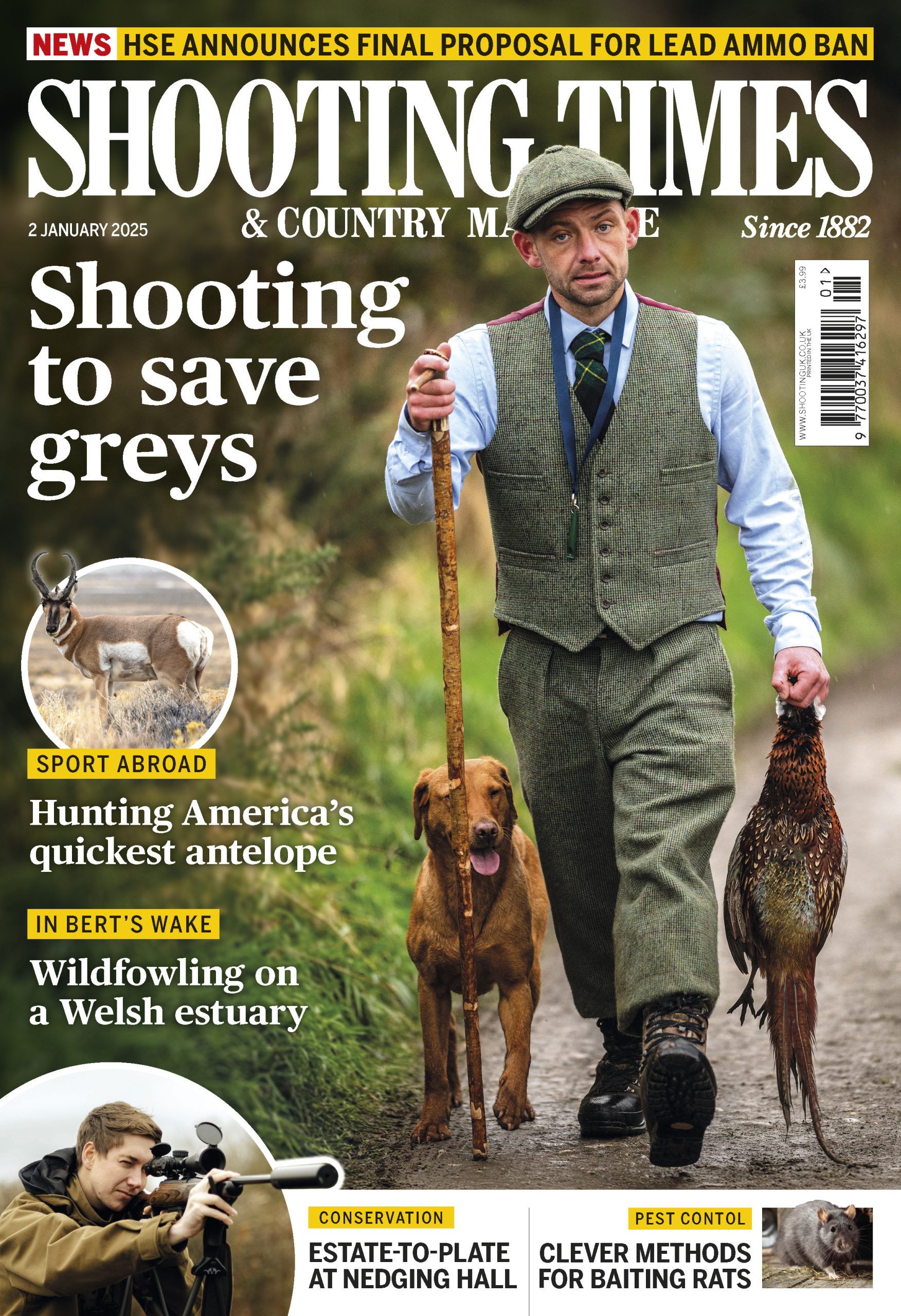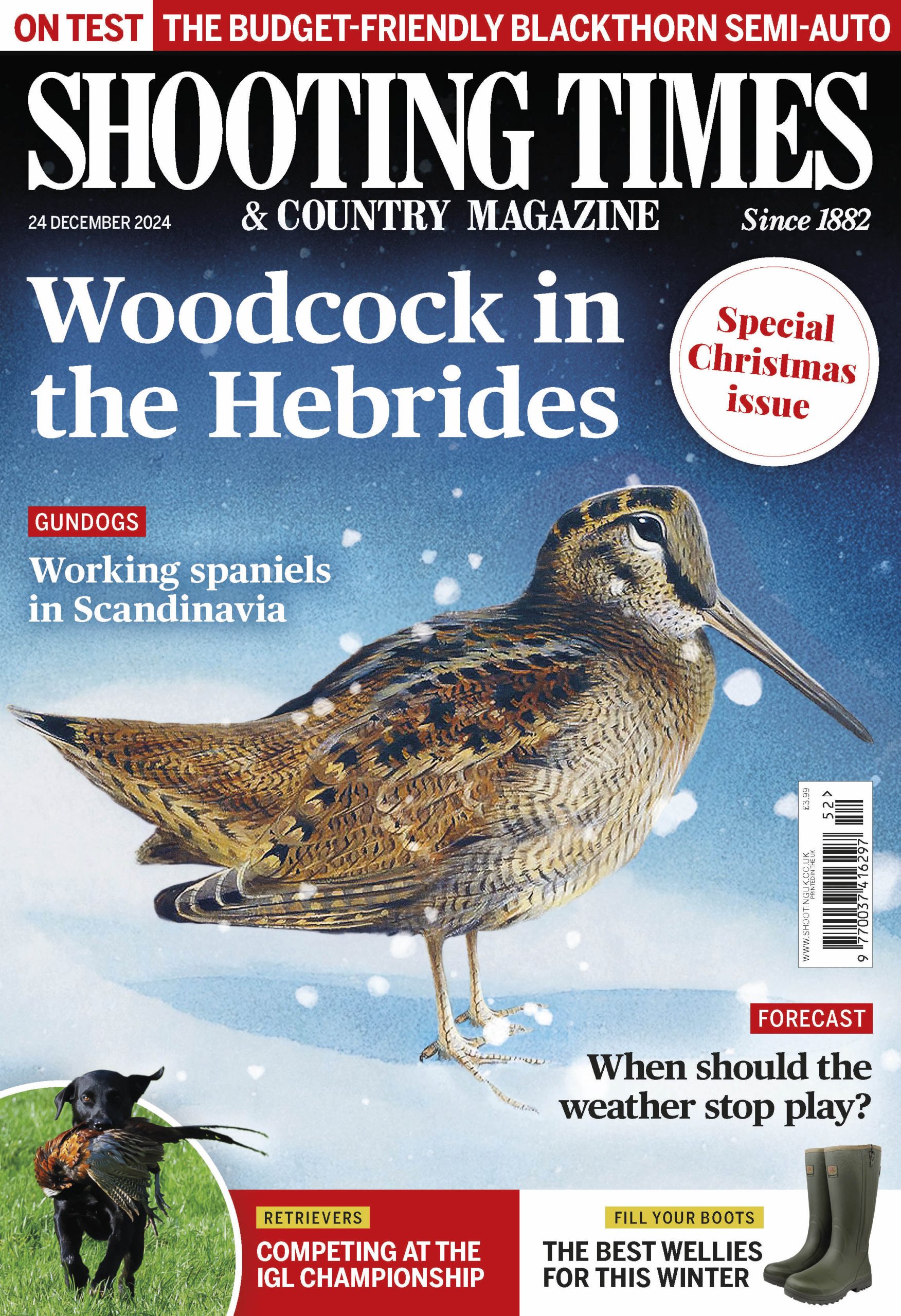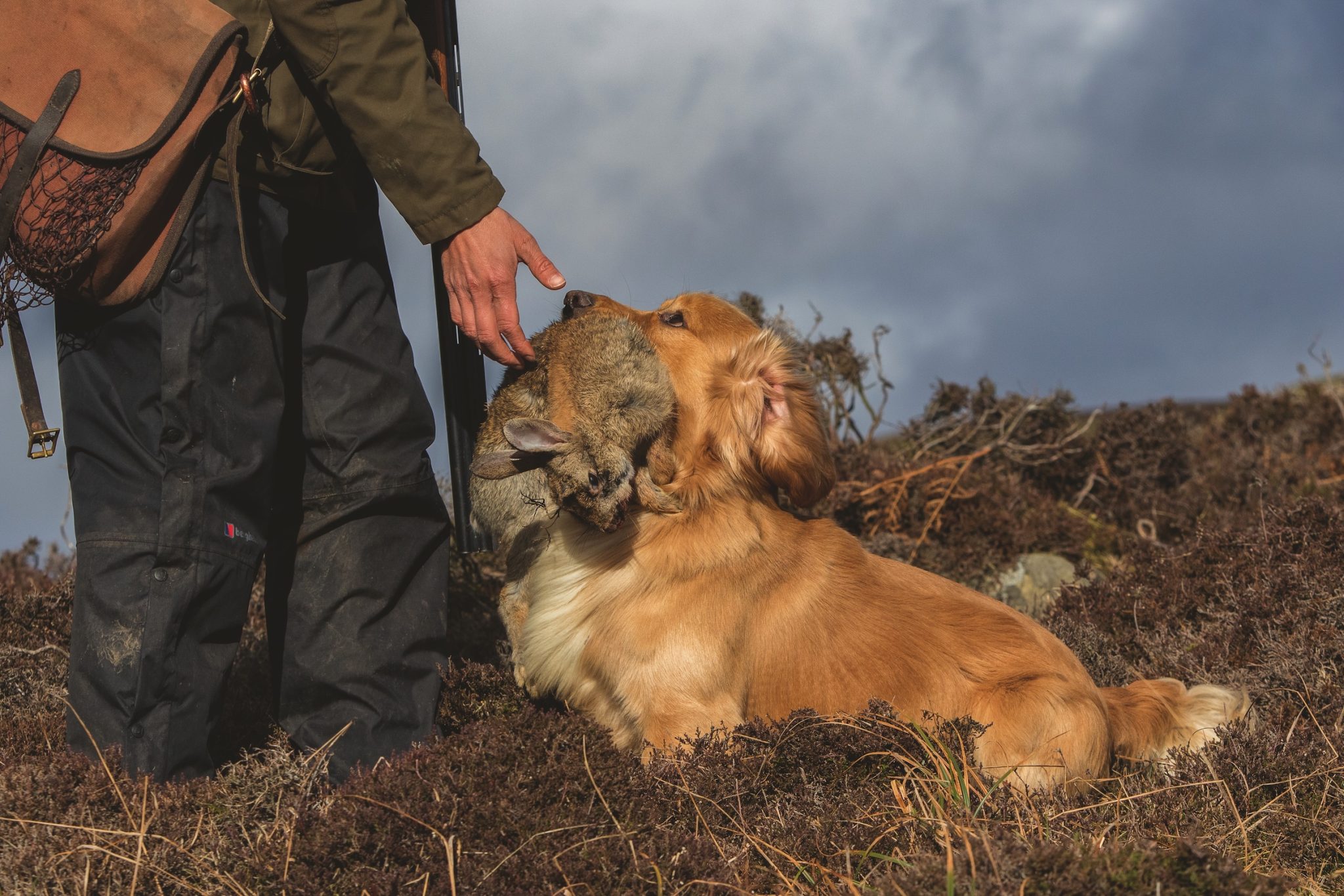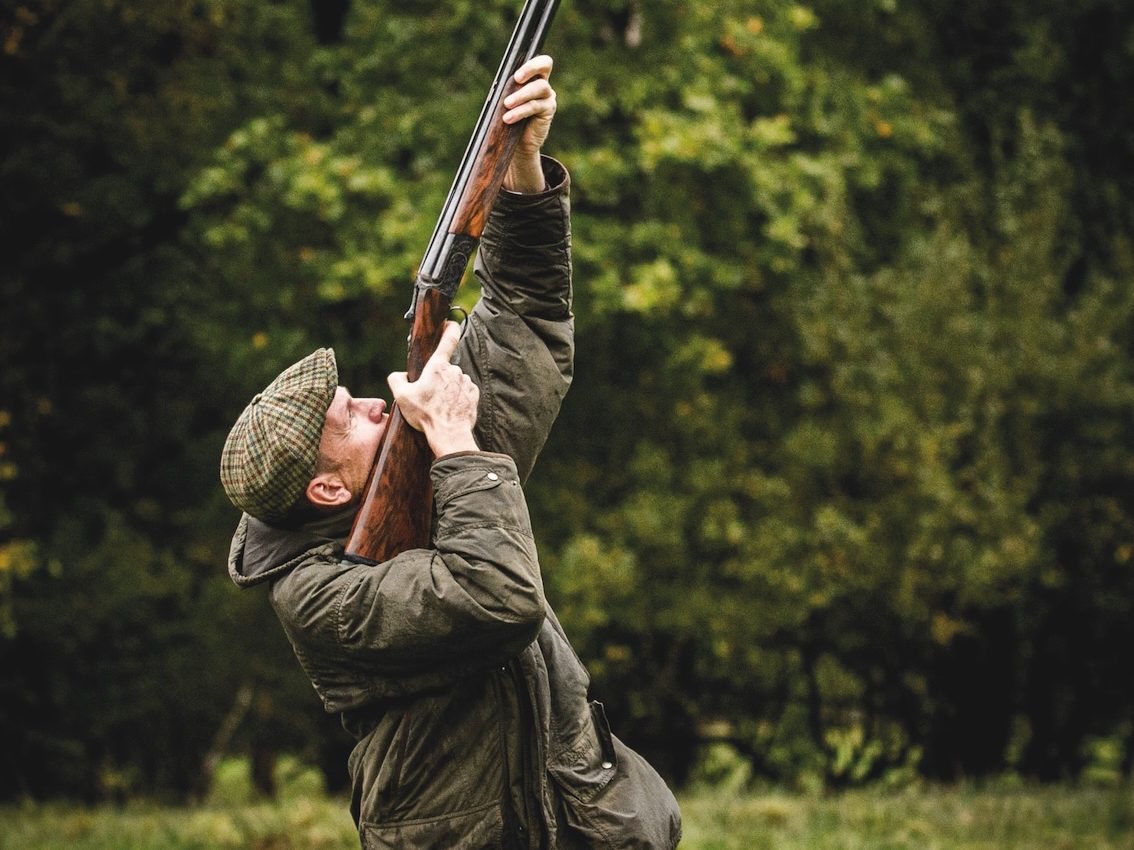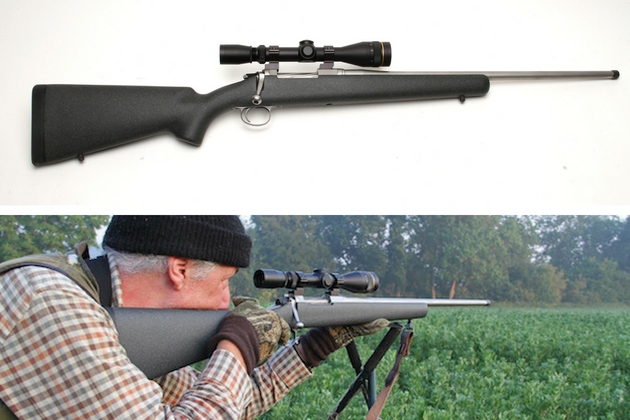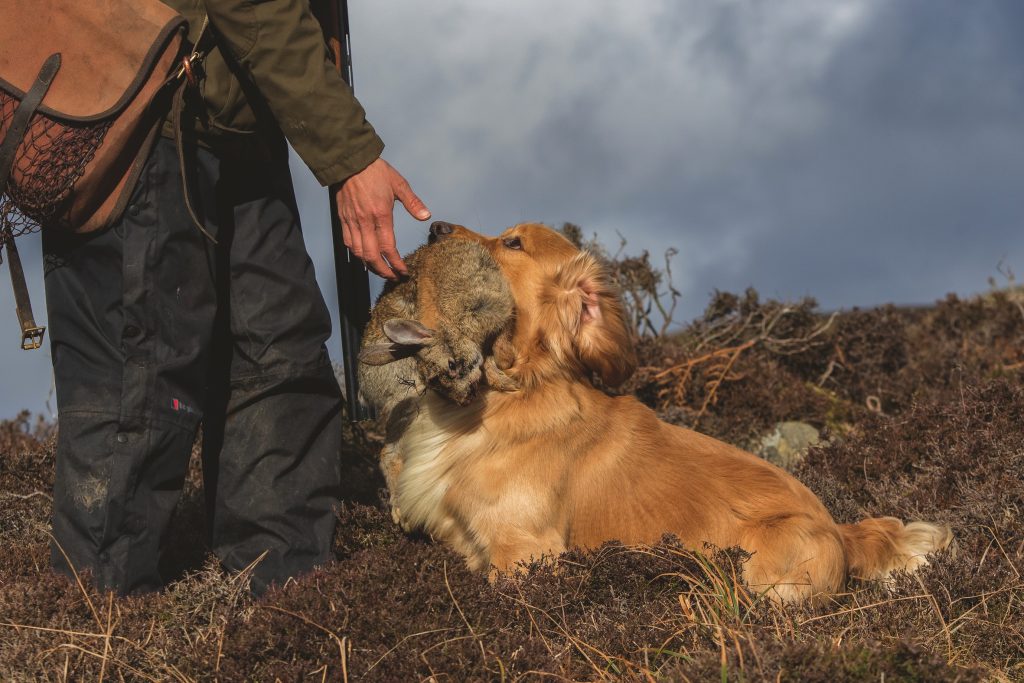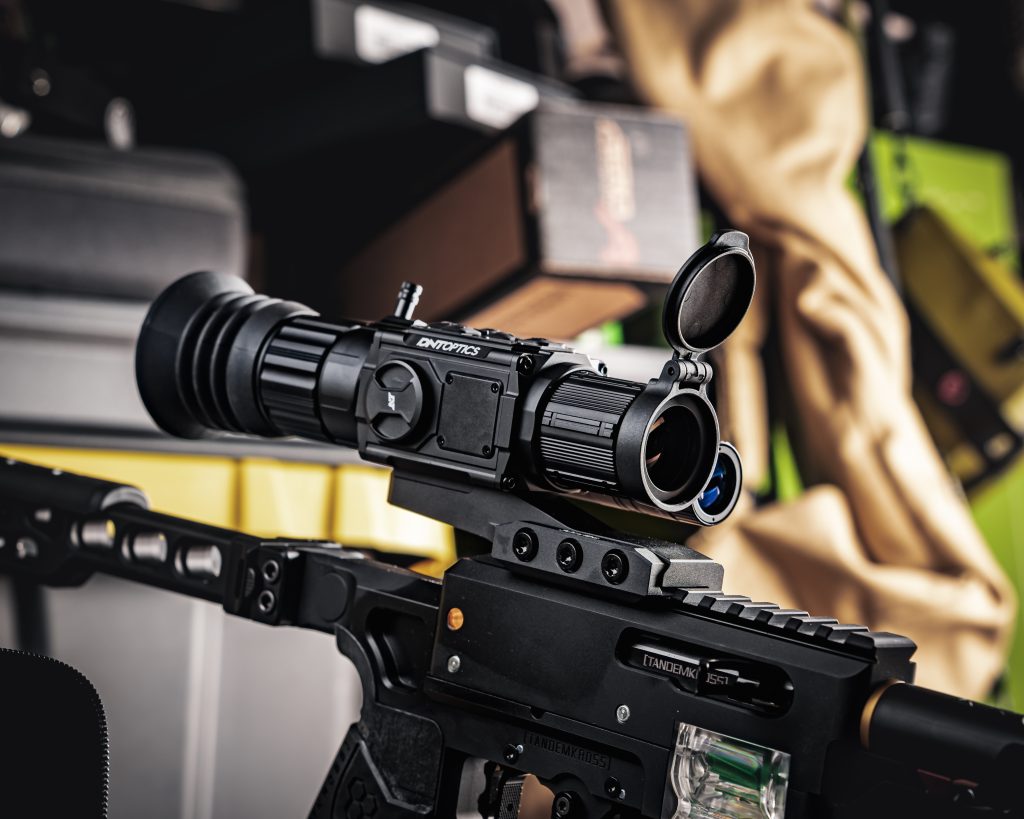Lamping may be one of the most efficient ways to kill foxes but if you miss then, you’ll have created…
Win CENS ProFlex DX5 earplugs worth £1,149 – enter here
How to choose a foxing rifle
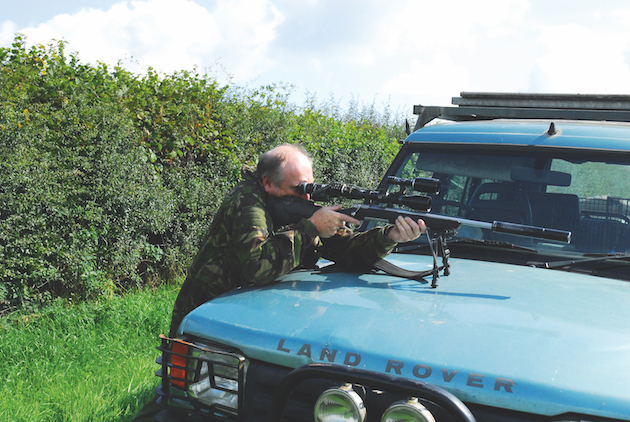
Choosing which foxing rifle best suits your needs is not necessarily straightforward as varying circumstances will dictate different choices. The first basic decision has to be whether you intend to shoot from a truck or from foot, and that will be determined by two basic factors – a) the nature of your shooting ground, and b) any physical limitations you may have.
In my part of the world – mid-Devon, the terrain is such that we rarely have the need to shoot more than 250 yards, and as the land is often too wet to drive on, we are primarily equipped to go after our quarry on foot. As a result, a lightweight outfit supported by tripod sticks suits us perfectly. If, however, we lived in an area where we had to shoot over greater distances, we would need a more stable shooting platform. In that case, we’d be looking at using much heavier rifles coupled with sandbags or a bipod and shooting either off the roof or the side of a truck.
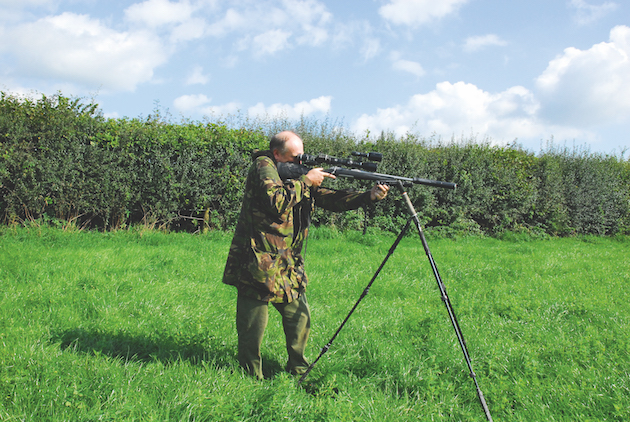
A lightweight outfit supported on a tripod is most suitable if you are not shooting over great distances
Keep it light
My personal preference is to have everything as light as you can get it – with the exception of the mounts for the optics. I frequently get asked to help resolve night vision accuracy issues, and nine times out of ten, they’re caused by the mounts moving; quick-release ones are easily the worst culprits. To illustrate this point further, I use a Kimber Montana as my main foxing rifle, which when bare only weighs 5 lbs. 2 oz. (which is incredibly light), but even so I use triple-clamp Burris Tactical Extreme scope mounts. The extra weight they impart is minimal, but they simply don’t move. My shooting partner and I have a permanent zeroing range set up, and so we’re able to check our accuracy whenever we want to. I’m pleased to say that I very rarely have to adjust anything – once a year would be unusual, despite my using the rifle most nights of the week.
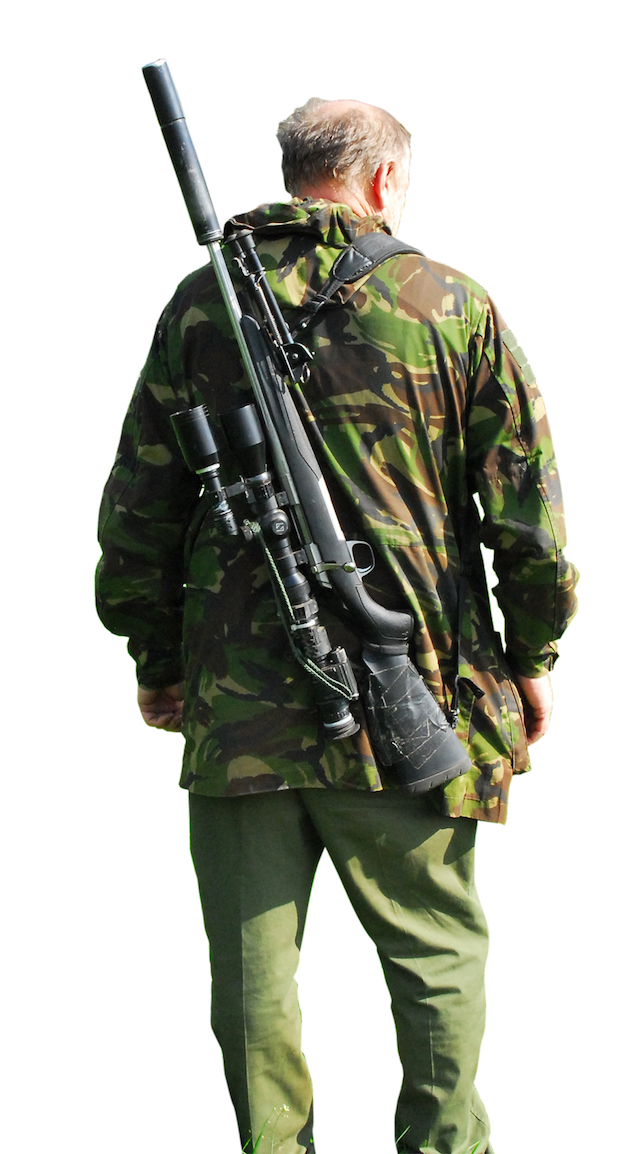
Remember that you need to add other elements to what you look at in the gunshop
Calibre
Ask five different foxers which calibre they prefer, and you’re likely to get five different answers.
The most common foxing calibres
- .243: Can be used for both deer and foxes, packs a good punch, and is great for extended ranges. Against this it has a lot of recoil for use with night vision, is loud, and the ammunition is expensive.
- .22-250: A superb foxing calibre – ammo is widely available, it packs a good punch over extended ranges and has little recoil.
- .223: Probably the most popular foxing calibre, with little recoil and good long range performance.
- .222: Known to some as a gentleman’s calibre, it has almost no recoil and will kill foxes out to 300 yards.
- .204: Having bought this calibre myself for daylight use, I liked it so much that it’s now my rifle of choice for shooting foxes at night. With next to no recoil, precision accuracy and a very flat trajectory, I rarely reach for my .22-250. nowadays.
There are, of course, all manner of other possible choices too, from the .17 centrefires up to full-on deer rifles. Although the various rimfire rifles will kill foxes, most people consider them to be only suitable at short ranges.
If I was, for example, out using a .17 HMR for shooting bunnies and a fox presented a good shot at less than 50 yards, I’d not hesitate to shoot it, but if it was much further out than that I’d leave it alone.
Barrels
In essence, most rifles can be divided into two groups by the thickness of their barrels. Some have thick profiles, whereas others have thin ones, with the former being much heavier than the latter. The reasoning for both goes like this:
Thick Barrels
Often labelled as ‘Varmint’ profiles, the increased diameter these barrels have provides more stability and allows you to fire more shots before heat warpage affects accuracy.
Thin Barrels
Usually referred to as ‘Sporter’ profiles, these are much lighter to carry around, and as you are highly unlikely to fire more than a few shots on any given night, heat issues can be ignored.
Is there a minimum recommended calibre for a foxing rifle?
Fox control: Why do all the rifle experts have such a low opinion of the .22 rimfire for fox control?…
Barrett Fieldcraft Sporter rifle
When you are young, keen and eager, the overall weight of a new rifle, scope and moderator is not your…
£2,800.00
Top tip
When examining a rifle from a weight perspective, it’s important to remember that what you pick up in a gun shop will be far lighter than what you eventually end up with. Good optics, for example, can be quite heavy. Add in the mounts, moderator, sling, a full magazine, and it will feel completely different. If you’re likely to use a bipod, factor that in too.
Related Articles
Get the latest news delivered direct to your door
Subscribe to Shooting Times & Country
Discover the ultimate companion for field sports enthusiasts with Shooting Times & Country Magazine, the UK’s leading weekly publication that has been at the forefront of shooting culture since 1882. Subscribers gain access to expert tips, comprehensive gear reviews, seasonal advice and a vibrant community of like-minded shooters.
Save on shop price when you subscribe with weekly issues featuring in-depth articles on gundog training, exclusive member offers and access to the digital back issue library. A Shooting Times & Country subscription is more than a magazine, don’t just read about the countryside; immerse yourself in its most authoritative and engaging publication.
